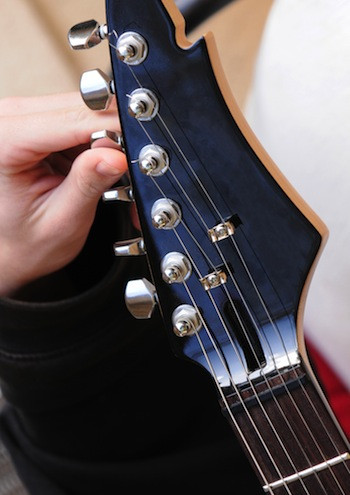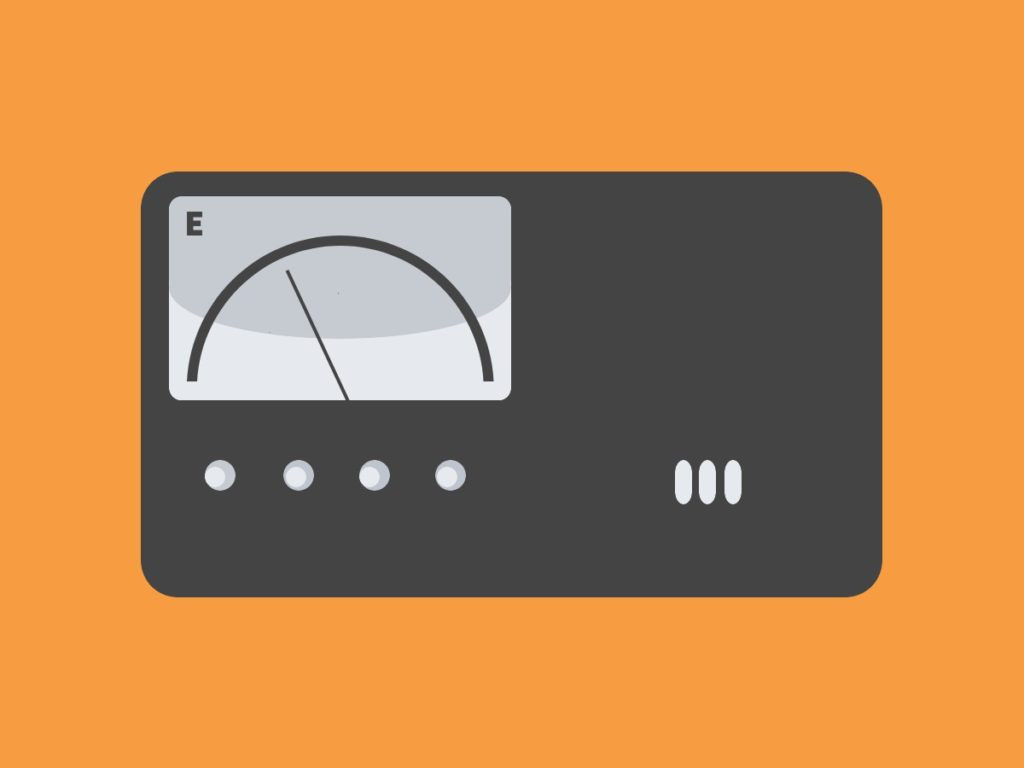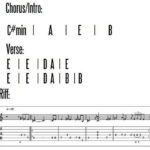Tuning your guitar by ear is an invaluable skill for any guitarist, and at guitarplayers.net, we’re here to guide you through mastering it, enhancing your musical ear and deepening your connection with your instrument. This method not only saves you from relying on electronic tuners but also builds a strong foundation in pitch recognition, improving your overall musicianship and musical skills. Ready to fine-tune your guitar and elevate your musical journey? Let’s explore this essential skill, uncover the advantages of aural tuning, and discover resources to support your learning.
1. Why Tune Your Guitar By Ear?
While electronic tuners offer convenience, tuning your guitar by ear provides significant advantages. It’s a skill that enhances your musical abilities and fosters a deeper connection with your instrument.
- Develops Your Ear: Tuning by ear trains your auditory perception, enabling you to recognize and adjust pitches accurately. This skill is crucial for musicianship, aiding in improvisation, singing, and songwriting.
- Enhances Musical Understanding: Recognizing pitch relationships improves your understanding of music theory, making you more attuned to harmony and melody.
- Independence: Relying on your ear frees you from the need for electronic devices, ensuring you can tune your guitar anytime, anywhere.
- Deeper Connection: Tuning by ear fosters a more intimate relationship with your instrument, as you learn to listen to and feel the nuances of its sound.
- According to research from the Berklee College of Music, in July 2025, aural skills training significantly improves a musician’s ability to perform and create music.
 Learning to tune your guitar by ear
Learning to tune your guitar by ear
2. Essential Steps for Tuning Your Guitar By Ear
Tuning a guitar by ear involves a systematic approach that relies on relative tuning, where you tune each string in relation to another. Here’s a step-by-step guide:
2.1. Prepare: Know Your Tuning Pegs
Before tuning, familiarize yourself with your guitar’s tuning pegs. Determine whether turning the peg clockwise raises or lowers the pitch of the string. This knowledge is crucial for making accurate adjustments.
2.2. Understand Guitar Strings
The standard tuning for a six-string guitar, from the thickest (lowest) to the thinnest (highest) string, is E-A-D-G-B-E. Knowing this order is essential for the tuning process. A common mnemonic to remember this is “Eddie Ate Dynamite Good Bye Eddie”.
 Diagram of Standard tuning for six string guitar
Diagram of Standard tuning for six string guitar
2.3. Sixth String: Low E
Begin by tuning the low E string to a reference E note. Use a tuning fork, a piano, or an online tone generator to establish the correct pitch. Adjust the tuning peg until the string matches the reference E.
Low E Reference Note
You can listen to a Low E Reference Note to make sure the string is tune correctly.
Low E Reference Note
Low E Reference Tone
You can listen to a Low E Reference Tone to make sure the string is tune correctly.
Low E Reference Tone
2.4. Fifth String: A
Fret the low E string at the 5th fret. This should produce an A note, which you’ll use to tune the open A string. Pluck both strings and adjust the A string’s tuning peg until it matches the pitch of the 5th fret on the E string.
A String being tuned
2.5. Fourth String: D
Fret the A string at the 5th fret. This produces a D note, which you’ll use to tune the open D string. Pluck both strings and adjust the D string’s tuning peg until it matches the pitch of the 5th fret on the A string.
D String being tuned
2.6. Third String: G
Fret the D string at the 5th fret. This produces a G note, which you’ll use to tune the open G string. Pluck both strings and adjust the G string’s tuning peg until it matches the pitch of the 5th fret on the D string.
G String being tuned
2.7. Second String: B
Fret the G string at the 4th fret. This produces a B note, which you’ll use to tune the open B string. Pluck both strings and adjust the B string’s tuning peg until it matches the pitch of the 4th fret on the G string. Notice that this is the one instance where you use the 4th fret instead of the 5th.
B String being tuned
2.8. First String: High E
Fret the B string at the 5th fret. This produces an E note, which you’ll use to tune the open high E string. Pluck both strings and adjust the high E string’s tuning peg until it matches the pitch of the 5th fret on the B string.
High E String being tuned
3. Verify and Refine Your Tuning
After tuning all the strings, it’s crucial to double-check your work. Play a simple chord or riff and listen carefully for any dissonances. If something sounds off, revisit the tuning process, comparing each string to its reference point and making small adjustments as necessary. For an additional check, you can compare the high E string to a reference.
High E Reference Note
You can listen to a High E Reference Note to make sure the string is tune correctly.
High E Reference Note
High E Reference Tone
You can listen to a High E Reference Tone to make sure the string is tune correctly.
High E Reference Tone
4. Troubleshooting Common Tuning Issues
Even with careful tuning, you might encounter certain issues. Here are a few troubleshooting tips:
- Buzzing Sounds: Buzzing can indicate that a string is too low or that the action (string height) is too low.
- String Slippage: If your strings are constantly going out of tune, they may be old or improperly installed. Consider restringing your guitar.
- Intonation Problems: If your guitar is in tune at the open position but sounds off when playing higher up the neck, you may need to adjust the intonation.
5. Alternative Methods for Checking Tuning
5.1. Using an Electronic Tuner
While the goal is to tune by ear, an electronic tuner can be used to verify your accuracy. Compare each string to the tuner’s reading and make any necessary adjustments. There are several types of tuners you can use:
- Standard Tuner: Works with both electric and acoustic guitars using a built-in microphone or input jack.
- Pedal Tuner: Ideal for electric or electroacoustic guitars, offering high precision.
- Headstock Tuner: Clips onto the guitar and senses pitch through vibrations, suitable for classical guitars and ukuleles.
 An Electronic guitar tuner
An Electronic guitar tuner
5.2. Comparing with a Piano
A piano can also serve as a reference for checking your tuning. Match each string to the corresponding key on the piano.
| Guitar String | Piano Key |
|---|---|
| Low E | E2 |
| A | A2 |
| D | D3 |
| G | G3 |
| B | B3 |
| High E | E4 |
6. Exploring Alternate Tunings
Once you’re comfortable with standard tuning, you can explore alternate tunings. These tunings open up new sonic possibilities and can inspire creativity.
6.1. Half-Step Down
Tuning down a half-step (Eb Ab Db Gb Bb Eb) reduces string tension, which some guitarists find more comfortable.
6.2. Drop D
In Drop D tuning (DADGBE), the low E string is tuned down to D. This creates a heavier sound and allows for power chords to be played with a single finger.
 Diagram of Drop D tuning for the six string guitar
Diagram of Drop D tuning for the six string guitar
6.3. Open G
Open G tuning (DGDGBD) allows you to play a G major chord by strumming the open strings. It’s popular in blues and rock music.
 Diagram of Open G Tuning for six string guitar
Diagram of Open G Tuning for six string guitar
6.4. Drop C
Drop C tuning (CGCFAD) is commonly used in metal and hard rock. It provides a lower, heavier tone.
 Diagram of Drop C Tuning for six string guitar
Diagram of Drop C Tuning for six string guitar
7. Expert Insights on Guitar Tuning
Gerald Klickstein, a renowned classical guitarist and author of “The Musician’s Way,” has written extensively on guitar tuning. His book, “Tuning the Guitar by Ear,” offers a comprehensive approach to simplifying and improving the tuning process.
8. Common Intentions When Tuning by Ear
- Achieving Accurate Pitch: Ensuring each string is tuned to the correct note in standard tuning (EADGBE) or an alternative tuning.
- Developing Aural Skills: Improving the ability to recognize and adjust pitches by ear, enhancing overall musicianship.
- Avoiding Reliance on Technology: Being able to tune a guitar without needing electronic tuners or other devices.
- Troubleshooting Tuning Issues: Identifying and correcting problems such as buzzing, string slippage, or intonation issues.
- Exploring Alternative Tunings: Experimenting with different tunings to create new sounds and musical possibilities.
9. Join the guitarplayers.net Community
Ready to take your guitar playing to the next level? Visit guitarplayers.net to explore our extensive collection of lessons, reviews, and sheet music. Join our vibrant community of guitar enthusiasts in the USA and connect with fellow musicians. Whether you’re a beginner or a pro, guitarplayers.net has everything you need to fuel your passion for guitar.
Address: 1140 Boylston Street, Boston, MA 02215, United States. Phone: +1 (617) 747-2261. Website: guitarplayers.net.
10. FAQs: Tuning Your Guitar By Ear
10.1. How long does it take to learn to tune a guitar by ear?
With regular practice, you can start to tune your guitar by ear within a few weeks. Consistency is key.
10.2. What are the benefits of tuning by ear compared to using a tuner?
Tuning by ear improves your aural skills, musical understanding, and connection with your instrument.
10.3. Can I tune my guitar by ear if I’m a beginner?
Yes, but it requires patience and practice. Start with a reference pitch and follow the steps carefully.
10.4. What if I can’t hear the difference between the notes?
Continue practicing and comparing the pitches. Your ear will gradually become more sensitive.
10.5. How do I know if my guitar is perfectly in tune?
Play a chord or riff and listen for any dissonances. Use an electronic tuner to verify your accuracy.
10.6. Is it possible to tune a 12-string guitar by ear?
Yes, but it requires more precision. The same principles apply, but double-check each string pair.
10.7. What should I do if my strings keep slipping out of tune?
Ensure your strings are properly installed and not too old. Consider restringing your guitar.
10.8. Can I use a piano to help me tune my guitar?
Yes, a piano is a great reference for checking your tuning. Match each string to the corresponding key.
10.9. What is the best way to find a reference pitch?
Use a tuning fork, a piano, or an online tone generator to establish the correct pitch.
10.10. How often should I tune my guitar?
Tune your guitar every time you play, especially if you notice that it sounds out of tune.

